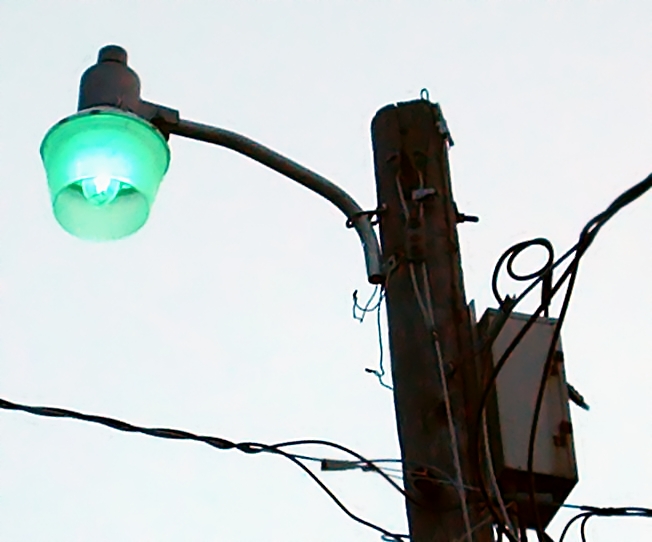Mercury Vapor (MH) Lamps: What Are They Used For? How They Work, Applications, and Safety Guidelines

Mercury vapor lamps (MH) are a type of high-intensity discharge (HID) light source commonly used in various lighting applications due to their excellent efficiency and bright white light output. In this article, we will explore what MH lamps are used for, how they operate, their real-world applications, and essential safety tips for handling them.
1. What Are Mercury Vapor (MH) Lamps Used For?
Introduction to MH Lamps, Common Types, and Their Uses
Mercury vapor lamps (MH) are gas-discharge lamps that generate light by passing an electrical current through mercury vapor. These lamps are recognized for their intense brightness and white light, which make them suitable for a variety of lighting needs.
There are several types of MH lamps with varying wattages, typically ranging from 50W to 1000W. These lamps are used in various settings, including street lighting, industrial lighting, and even in horticultural applications.
The key benefits of MH lamps include:
- High Luminous Efficiency: MH lamps emit a bright white light that is closer to natural daylight compared to other types of lamps.
- Energy Efficient: These lamps are more energy-efficient than traditional incandescent lighting, providing high brightness while consuming less power.
- Long Lifespan: MH lamps can last up to 24,000 hours, reducing the need for frequent replacements and maintenance.
Common uses of MH lamps include outdoor lighting, commercial and industrial lighting, and growing plants in greenhouses.
2. How Do Mercury Vapor (MH) Lamps Work?
Explaining the Working Principle and Key Components of MH Lamps
Mercury vapor lamps work through a process of gas ionization, which occurs when an electric current is passed through mercury vapor. Here’s how they function:
- Arc Tube: The core component of an MH lamp is the arc tube, which contains mercury and other gases like argon. This tube is made from a durable material like quartz to withstand the high pressure and temperature inside.
- Ballast: The ballast regulates the electrical current and provides the necessary voltage to start the lamp. It also ensures the lamp operates efficiently once lit.
- Ignition Process: When the lamp is turned on, the ballast sends a surge of electricity into the arc tube, causing the mercury vapor to ionize. The excited mercury atoms then release photons, which produce visible light.
- Warm-Up Time: MH lamps require a warm-up period to reach full brightness, usually taking a few minutes. During this time, the light gradually intensifies.
The light emitted by MH lamps has a white, bluish tint, making them suitable for applications where bright, clear lighting is essential.
3. Where Are Mercury Vapor (MH) Lamps Used?
Common Applications of MH Lamps
Mercury vapor lamps are widely used in various environments where high-intensity lighting is required. Some of the most common applications include:
- Street Lighting: MH lamps are commonly used for street lighting due to their ability to illuminate large areas with bright, clear light. Their efficiency makes them an ideal choice for city streets, highways, and parking lots.
- Industrial and Commercial Lighting: The bright, white light produced by MH lamps is ideal for large industrial facilities, warehouses, and commercial spaces, where visibility and productivity are important.
- Horticulture: MH lamps are used in greenhouses and indoor gardening to promote plant growth. The spectrum of light produced by MH lamps supports photosynthesis, making them effective for growing crops and ornamental plants indoors.
- Security Lighting: Due to their high luminous output, MH lamps are also used for security lighting in large outdoor areas, such as parking lots and perimeters of industrial sites.
Despite their advantages, MH lamps are not ideal for all settings, particularly where color accuracy is crucial, as their light can distort colors.
4. How to Use Mercury Vapor (MH) Lamps Safely
Safety Tips and Important Precautions
While MH lamps are highly effective for lighting purposes, they require careful handling due to their high operating temperatures and the presence of mercury. Here are some essential safety guidelines for using MH lamps:
- Installation: Always follow the manufacturer’s instructions when installing MH lamps. If you are not familiar with electrical systems, it’s best to hire a licensed electrician for installation.
- Handling: The arc tube inside MH lamps is fragile, so handle the lamps with care. Ensure that they are securely fixed in their sockets to prevent them from falling or breaking.
- Ventilation: Provide proper ventilation around the lamp to prevent overheating. Do not cover or obstruct the lamp with flammable materials.
- Replacement: When replacing an MH lamp, make sure to turn off the power before removing the lamp. Allow the lamp to cool down completely before handling it, as the outer surface can become very hot.
- Disposal: Mercury vapor lamps contain a small amount of mercury, so they should not be disposed of with regular waste. Instead, take them to a recycling facility that handles hazardous waste.
By following these safety measures, you can ensure that MH lamps are used safely and efficiently, providing optimal lighting without risks.
Conclusion
Mercury Vapor (MH) lamps are powerful and energy-efficient lighting solutions that provide high-intensity, white light ideal for street lighting, industrial facilities, and horticulture. Understanding how these lamps work, where they are best used, and how to handle them safely will help you maximize their benefits while ensuring safe operation. By adhering to proper safety protocols, you can enjoy the advantages of MH lamps without any hazards.




